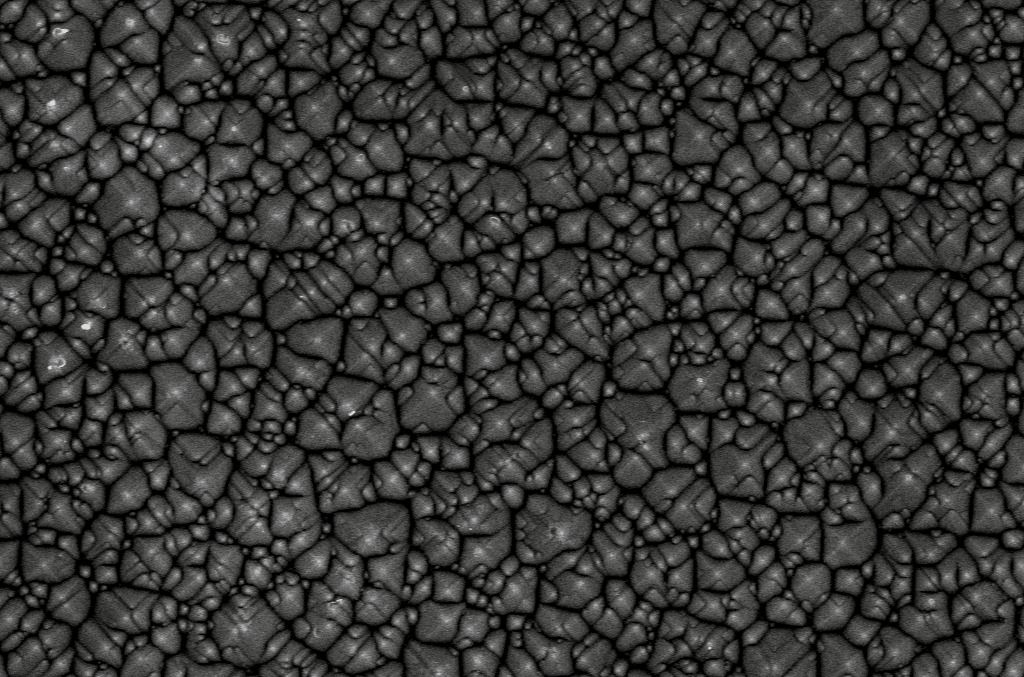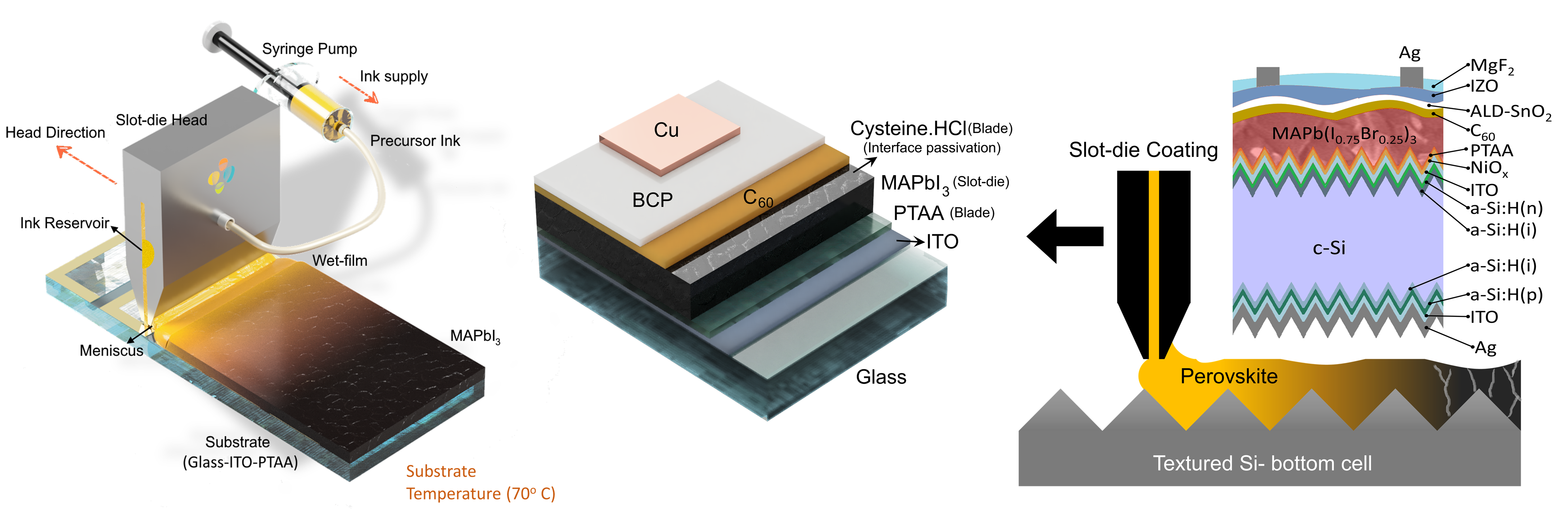


26 August, 2020
In this work, we systematically enhance the performance of slot-die coated PSCs in the p-i-n device architecture from 18.3% in current literature to 21.8% for champion devices, commensurate with the state-of-the-art spin-coated p-i-n PSCs. Later, the technique was adapted and optimized the parameters to achieve a slot-die coating of MAPb(I0.75Br0.25)3 with a bandgap of 1.68 eV on textured silicon substrates, resulting in monolithic 2-terminal tandems with a champion PCE of 23.8%. We note that this is amongst the first reports of solution-processed perovskites on textured silicon, and the first using slot-die coating.
As commercial interests for perovskite photovoltaic (PV) technology grows, the search for large-scale production methods to adapt the technology towards industrial applications intensifies. Though slot-die coating is a fairly successful industrial coating technique, its success with perovskite solar cells (PSCs) is relatively low in comparison to laboratory-scale spin-coating. In this work, we systematically enhance the performance of slot-die coated PSCs from 18.3% in current literature to 21.8% for champion devices; approximately an improvement of 20%. It is important to note that the slot-die coated PSCs are fabricated in an inverse p-i-n device architecture, making use of hydrophobic poly(triarylamine) (PTAA) as the hole transport layer (HTL); reducing the performance gap between spin-coated (23%) and slot-die coated (21.8%) devices.

The improvement in performance for slot-die coated PSCs here is realized by employing three key strategies, namely solvent engineering, additive engineering, and interface passivation. For MAPbI3 perovskite absorber fabrication, we employ a one-step, anti-solvent/N2 blowing free slot-die coating process at a lower substrate temperature by making use of acetonitrile (ACN) + methylamine (MA) solvents. Introducing an amphoteric surfactant molecule improves the ink-substrate dynamics, especially on hydrophobic PTAA substrates; boosting the device performance further. Finally, we introduce surface passivation of MAPbI3 thin films using cysteine hydrochloride (Cys.HCl), thereby, resulting in highly efficient slot-die coated PSCs surpassing the 20% efficiency mark. Also, a thorough optimization of slot-die coating parameters is performed to achieve comprehensive results.

Moreover, with perovskite/silicon tandem devices gaining immense attention as a pathway for commercializing perovskite PV technology, we introduced a slot-die coating of perovskites toward this purpose. Herein, we adapted our technique and optimized the parameters to achieve the slot-die coating of MAPb(I0.75Br0.25)3 with a bandgap of 1.68 eV on textured silicon substrates, resulting in monolithic 2-terminal tandems with a champion PCE of 23.8%. We note that this is amongst the first reports of solution-processed perovskites on textured silicon, and the first using slot-die coating.
Our results illustrate the promise of slot-die coating for scale-up of perovskite solar cells in both single and multi-junction applications.
Reference: Subbiah, A. S.; Isikgor, F. H.; Howells, C. T.; De Bastiani, M.; Liu, J.; Aydin, E.; Furlan, F.; Allen, T. G.; Xu, F.; Zhumagali, S.; Hoogland, S.; Sargent, E. H.; McCulloch, I.; De Wolf, S., High-Performance Perovskite Single-Junction and Textured Perovskite/Silicon Tandem Solar Cells via Slot-Die Coating. ACS Energy Lett. 2020. https://doi.org/10.1021/acsenergylett.0c01297